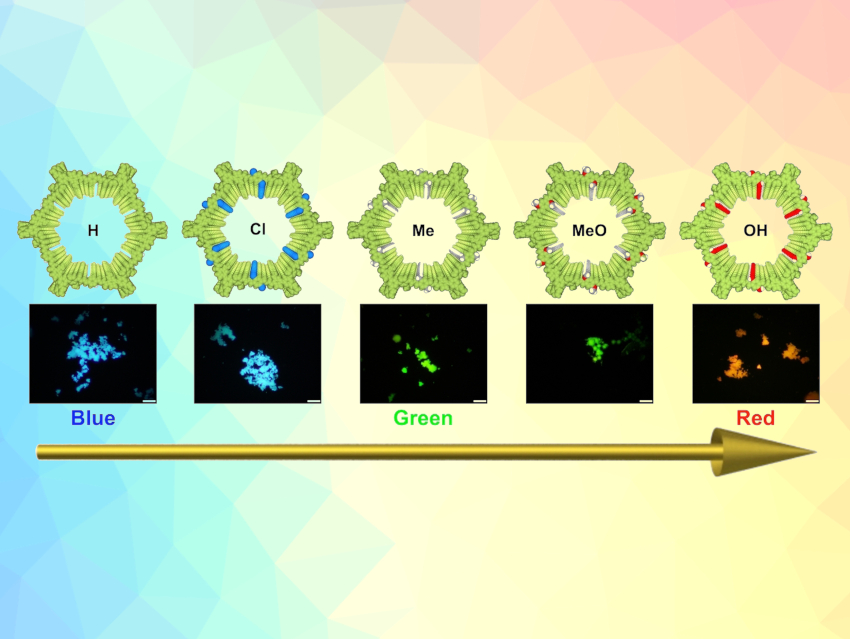Covalent organic frameworks (COFs) can possess extended π-skeletons and are, thus, capable of emitting visible light. However, tuning the properties of COFs to control the wavelength of the emitted light is challenging. A range of different materials is usually required to emit the three primary colors of light—red, green, and blue (RGB).
Donglin Jiang, National University of Singapore, and colleagues have developed COFs with tunable light emission. The team prepared light-emitting COFs by combining chromophores using hydrazone links that provide partial π-conjugation. The COFs were prepared via polycondensation of 1,3,5-tris(3′-methoxy-4′-hydrazinecarbonylphenyl)benzene (TMHzcB) as a knot with linkers such as 1,3,5-triformylbenzene (TFB), 1,3,5-tris(4-formylphenyl)benzene (TFPB), terephthalaldehyde (TA), 2,5-dichloroterephthalaldehyde (DCTA), 2,5-dimethylterephthalaldehyde (DMeTA), 2,5-dimethoxyterephthalaldehyde (DMeOTA), or 2,5-dihydroxyterephthalaldehyde (DHTA) under solvothermal conditions.
The emission color of the resulting frameworks is widely tunable from blue to green to red (pictured below) by functionalizing the surface of the pore walls with chlorine, methyl, methoxy, or hydroxy groups. This is achieved by using the functionalized linkers directly in the COF synthesis. These substituents cause, e.g., inductive effects, hyperconjugation, resonance effects, or phototautomerization, which affect the π-conjugation in the framework, and thus, influence the light emission.
.jpg)
Integrating multiple surface sites into the wall surface enables the construction of different frameworks that can show light emission in tailor-made colors. According to the researchers, the frameworks combine luminescence activity, stability, color tunability, and sensibility in one material, which could be useful for light-emitting and sensing applications.
- Editing Light Emission with Stable Crystalline Covalent Organic Frameworks via Wall Surface Perturbation,
Zhongping Li, Keyu Geng, Ting He, Ke Tian Tan, Ning Huang, Qiuhong Jiang, Yuki Nagao, Donglin Jiang,
Angew. Chem. Int. Ed. 2021.
https://doi.org/10.1002/anie.202107179

![Synthesis of [c2]Daisy Chains via Mechanochemistry](https://www.chemistryviews.org/wp-content/uploads/2025/04/202504_RotaxanesWithSolidStateMechanochemistry-125x94.png)

